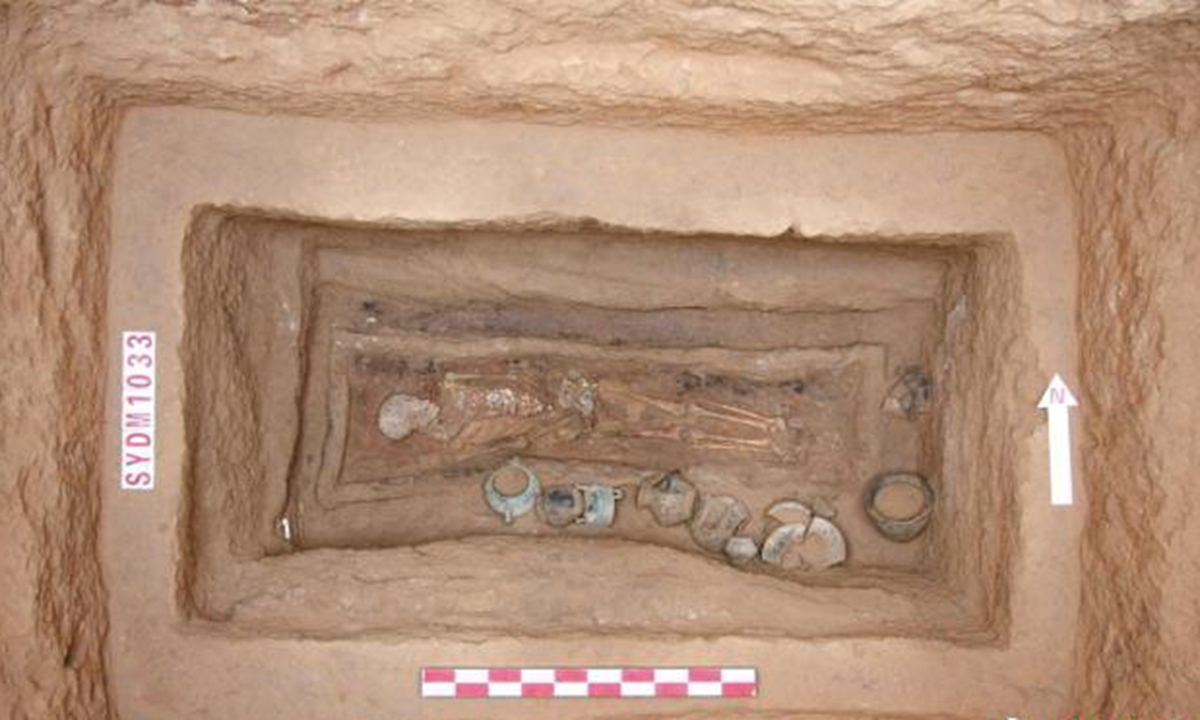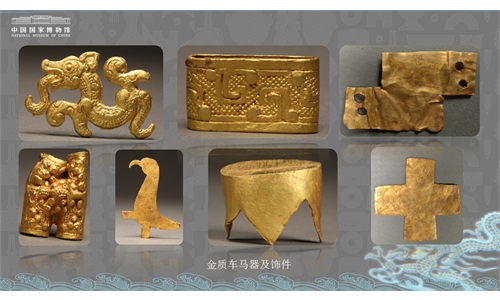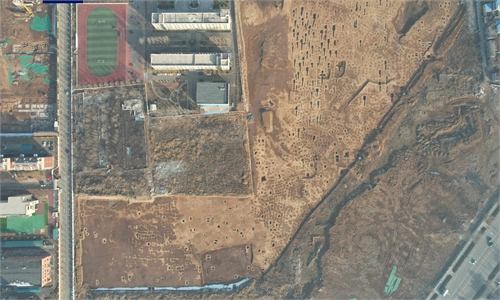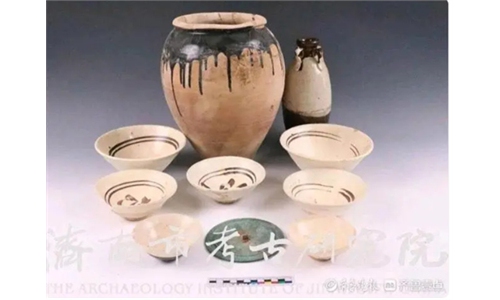ARTS / CULTURE & LEISURE
Noblewoman tomb dating back 3,000 years unearthed

Photo: Courtesy of Shaanxi Provincial Institute of Archaeology
A tomb belonging to a noblewoman dating back about 3,000 years has been unearthed in North China's Shanxi Province, the local archaeology institute announced on Monday.The tomb, designated as M1033, was found in the Dahekou cemetery, Yicheng county. According to archaeological team leader Xie Yaoting, the tomb is medium-sized in scale, with a pit in the center containing the remains of a sacrificial animal.
The tomb's owner was a female between 31 and 34 years old who was buried in a supine posture with straight limbs. Archaeologists believe that the tomb's owner was likely a middle-ranking noblewoman from the mid-Western Zhou (1046BC-771BC) period.
In addition, more than 430 items, including bronze, pottery, jade and shell artifacts, were discovered in the tomb.
The discovery is just one of the hundreds of tombs at the Dahekou cemetery, which was initially discovered in 2007 after being looted. Later exploration discovered that it was a Western Zhou graveyard with at least 400 buried tombs, which provide invaluable insight into Western Zhou burial and material culture.
More importantly, the finding of the Dahekou cemetery has shed light on the existence of the Ba state, previously undocumented in the historical texts of the Western Zhou. It is of great value for the study of the feudal states in the southern region of Shanxi during the Western Zhou period and its relationship with the Jin state, as most of the province was the territory of the Jin state during the period.



